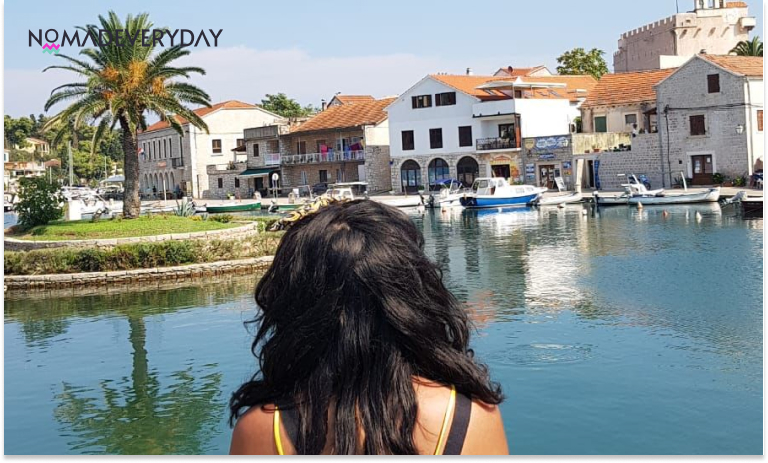In this article, we will see when is the best time to visit Croatia and what are the different climates per region.
Croatia is a country in Southern Europe, bordering the Adriatic Sea on its western coast.
Croatia has many islands, islets, and reefs, Croatia has three main climates.
Because of its crescent shape, Croatia is bordered by many countries such as Slovenia, Hungary, Serbia, Bosnia-Herzegovina, and Montenegro.
On its coastline, there is a Mediterranean climate while in its northern and northeastern plains, the climate is more continental.
As for the center of Croatia, we observe a mountainous climate.
What all three regions have in common is that the summers are quite similar in terms of duration and intensity. Indeed, during the summer period, we find strong heat and little precipitation.
As for the winters, they are mild on the coast and harsher in the other two parts of the country.
When to go to Croatia: the best periods
The best time to go to Croatia is from the beginning of May and the end of September when the temperatures are pleasant and the sun shines.
However, those allergic to crowds should avoid the touristy months of July and August on the coast.
The sun is shining, the weather conditions are ideal and the water is warm enough to swim in.
This will allow you to fully enjoy the beautiful Adriatic coastline, but also to make memorable walks in the national parks.
The rest of the year, the sky is often blue and the temperatures remain very pleasant along the coast.
A trip to Croatia in the middle of winter is therefore quite possible: you can rest and admire the beautiful seaside resorts, such as Hvar, Split, or the island of Korčula, before going skiing on the slopes of Sljeme, near Zagreb.
Croatia has two different climates.
On the coast, the climate is Mediterranean: the winter is pleasant and the summer is hot.
Inland, on the other hand, winters are very cold and summers are hot and stormy.

Best periods to visit per region
The Croatian plains
The plains of Croatia are mainly located in the north and northeast of the country, including Slavonia.
The best time to visit the interior of the country is between May, June, and September.
Indeed, the heat is less scorching to be able to discover the richness of these Croatian plains.
The Croatian plains have two very distinct and opposite seasons. Winters are harsh with heavy snowfalls.
Temperatures often fall below 0°C for several days at a time.
The average daily temperature during winter is between 0 and 2°C.
Beware of roads that freeze over quickly. In the summer, on the contrary, it is very hot and can sometimes bring thunderstorms at the end of the day.
The Croatian coastline
Due to its position, the coastline and the coast of Dalmatia of Croatia benefit from a Mediterranean type of climate.
The best time to go to the Croatian coast is between May and September.
This is the most popular summer period for tourists as the climate is idyllic with temperatures between 25 and 30 °C and little rain.
The winters are very mild and pleasant, rainy between October and December and the minimum temperatures are 10 °C. Precipitation can rise to over 1,000 mm during the winter.
Dubrovnik has an average of 100 days of rain per year and over 2,600 hours of sunshine per year.
During the summer, the coastline is also very hot, with temperatures around 30°C, and the period is very dry.
For swimming enthusiasts, the water temperature is around 26°C until September and October.
You should know that the coastline is subject to strong winds, especially during the winter, coming from the northeast.
Called “Bora”, this wind is a continental type, i.e. cold and dry.
It can considerably cool down the temperatures but, it chases away the clouds.
To the south, however, blows a wind that is characterized by hot and heavy air, even humid, which can bring thunderstorms during the summer.
In spring and early summer, the mistral wind blows along the Croatian coast.
This wind refreshes the heat of the summer. It usually blows all day long, with a peak of intensity in the early afternoon.
Zagreb
Zagreb, the capital of Croatia, is located in the north of the country. There are four distinct seasons.
Zagreb has cold and snowy winters, especially between December and March, with temperatures as low as -4 °C.
Autumn is characterized by thick fog and is generally rainy, especially in November (with an average of 850 mm of precipitation).
As for spring in the capital, the temperatures are more pleasant but the month of May has a peak of rainfall identical to November.
Beware of showers while you are out walking!
Unlike the summers on the coast, Zagreb’s summers are hot but rainy. The average temperature in the summer months is 26°C.
The central part of Croatia
The central part of Croatia, especially characterized by the Dinaric Alps, but also the south of the country has a mountain climate.
Composed of mountains and high plateaus, this part is dominated by very harsh and snowy winters, much more than the north of Croatia.
We can observe negative temperatures in winter and up to 20°C in summer.
However, the higher the altitude, the cooler the temperatures.
When is the rainy season in Croatia?
The months between May and November are the rainiest and the average annual rainfall is 850 mm.
Average maximum temperatures range from 26°C in August to 3°C in January and average minimum temperatures range from -4°C in January to 14°C in July.
When is tourist season in Croatia?
The tourist season is high in July and August
- Very low season in Croatia: January, February, March and December.
- Low season in Croatia April, May, October and November.
- High season in Croatia: June and September.
- Very high season in Croatia: In July and August, the tourist influx in Croatia is at its highest.












